On Nov. 25, 2005:
Today I went to the Edo-Tokyo Museum that I signed up for in October with the TUFS Foreign Students Association. This trip was organized by the Fuchu English Club because I think they wanted to practice their English with us. We only paid 300 yen and it included admission fee, lunch and bus ride. The club consisted mostly of retired men and housewives. I was “partnered” up with Watanabe-san who during lunch asked us to guess how old he was, and he said he was 72. I thought he was around 60 because he looked so young. He said he could speak English, Chinese, Korean, Japanese, and was learning French and Italian! The bus ride to the museum was interesting because it was the first time I had been in a vehicle in Tokyo, and going on the elevated expressways right through the city and seeing all those tall buildings was so amazing. The museum itself was very interesting, it talks about the history of Tokyo and how it was when it was still called Edo. It was lots of really nice and detailed dioramas. I bought a map book that showed how Tokyo was like in the 50s compared to now for 2590 yen.
First we had to meet up with them at the TUFS campus. This meant going west cross-town from our dormitory and then heading back east to the Edo-Tokyo Museum. It would have been much faster if we just met them at the museum as our dormitory as close to where the museum was located.
On the expressway heading east past Shinjuku.
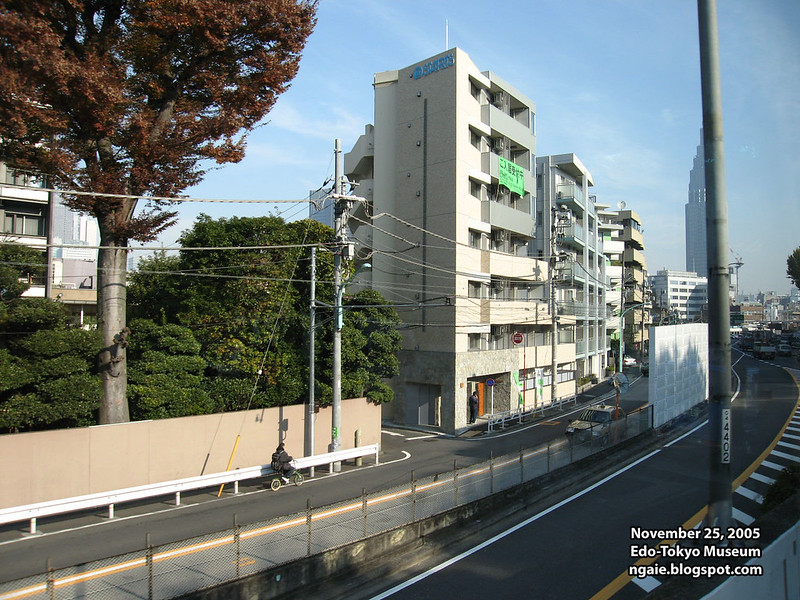
The NTT DoCoMo building in Shinjuku.

Traffic jams near the Yotsuya area.

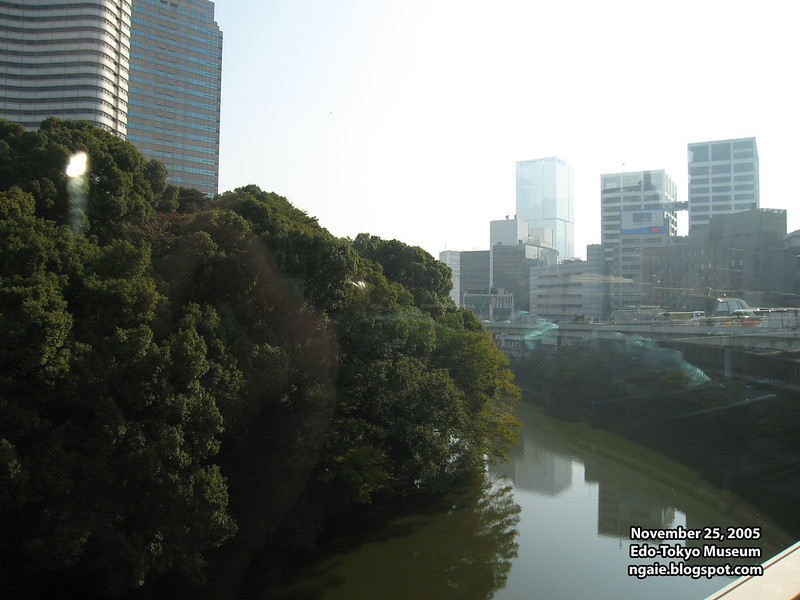

Entering central Tokyo.
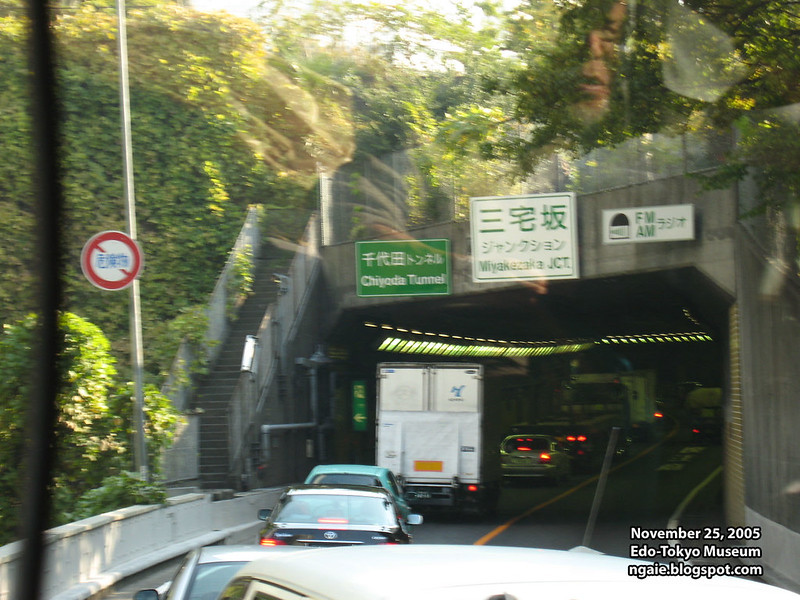
The Nihombashi business district area.
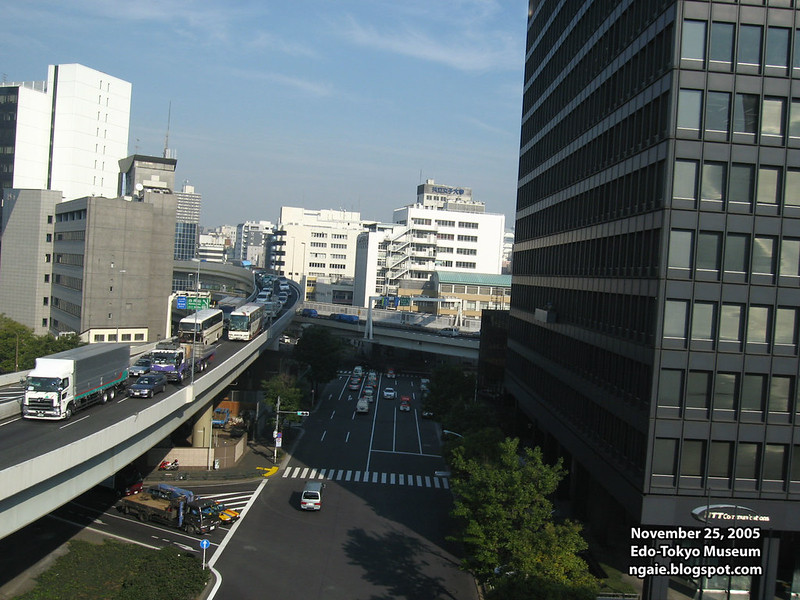
The Bank of Japan building on the left.


The Nihombashi Mitsukoshi department store.

Heading east towards the Ryogoku area.
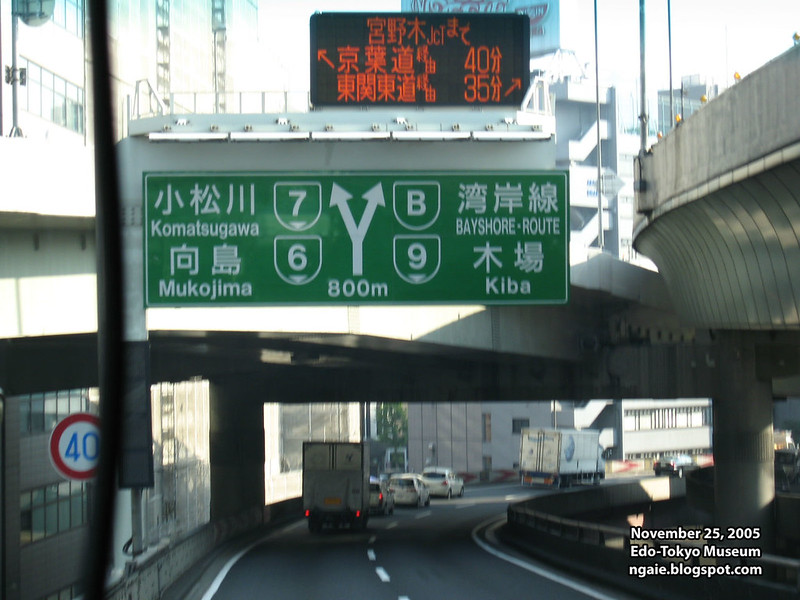


Crossing the Sumida River.



The Edo-Tokyo Museum is located right behind the main venue for sumo where all the sumo competitions are held.

Inside the Edo-Tokyo Museum.

Lots of models and dioramas of the Tokyo that doesn't exist anymore.
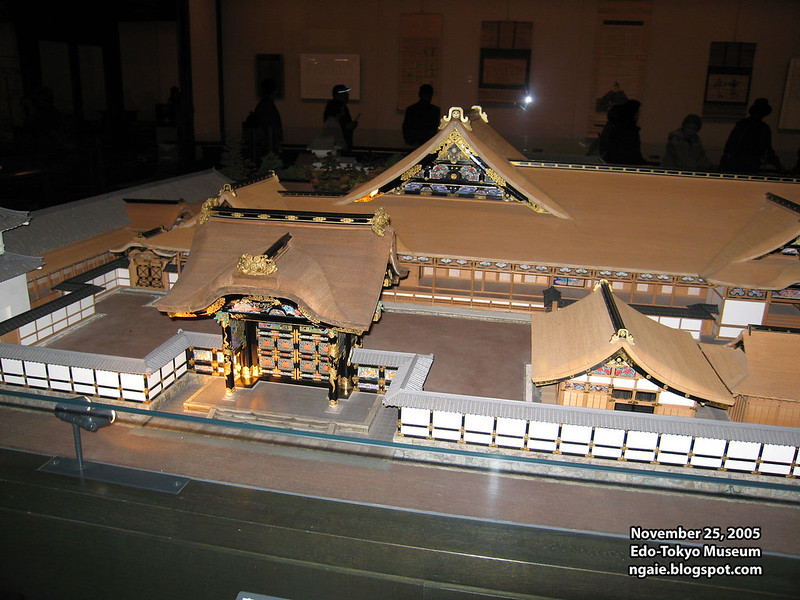




How Ginza looked like before.
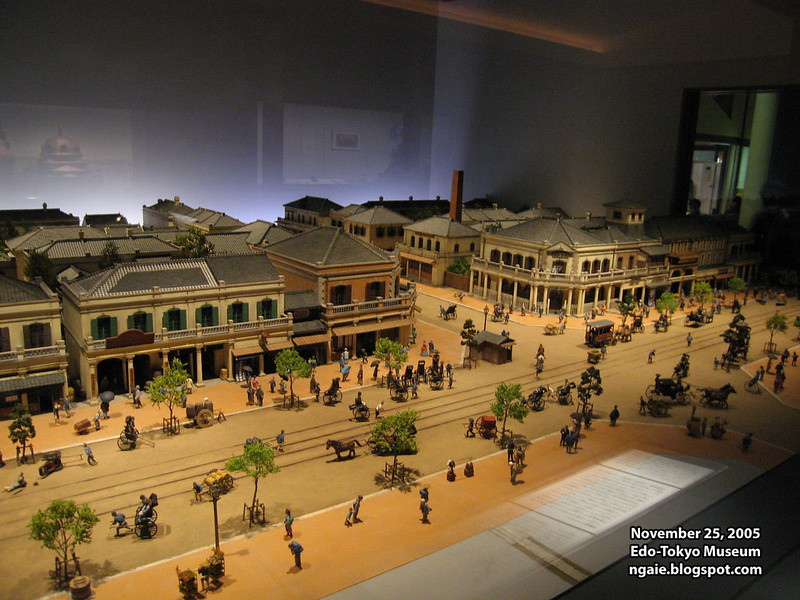

The rules for studying in a primary school in Tokyo in 1878.

Old maps of Tokyo.




The former streetcar network of Tokyo, not mostly dismantled in favour of subways. There is only 1 line remaining from this map.
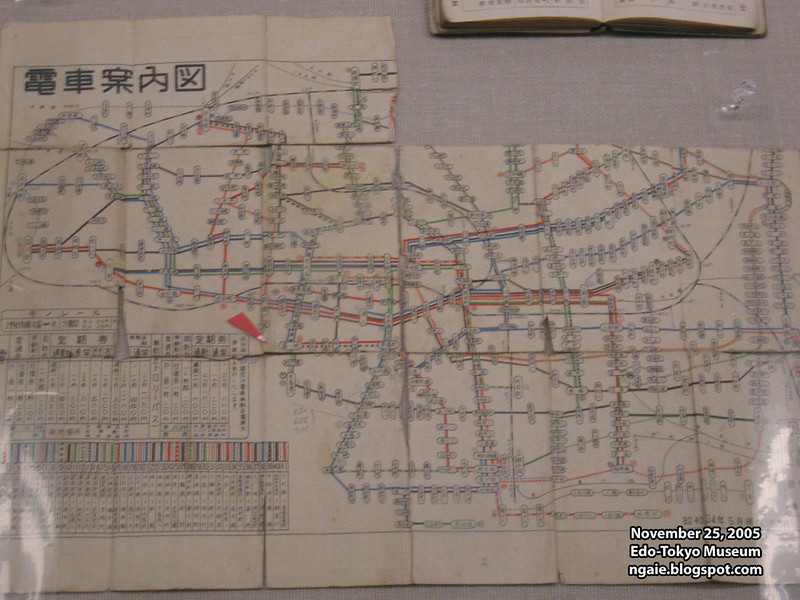
Old media.

Recreation goods from the pre-war period.

A model of the Ryounkaku, Japan's first skyscraper, demolished after the Great Kanto Earthquake of 1923.

Model of slums that existed in Tokyo.
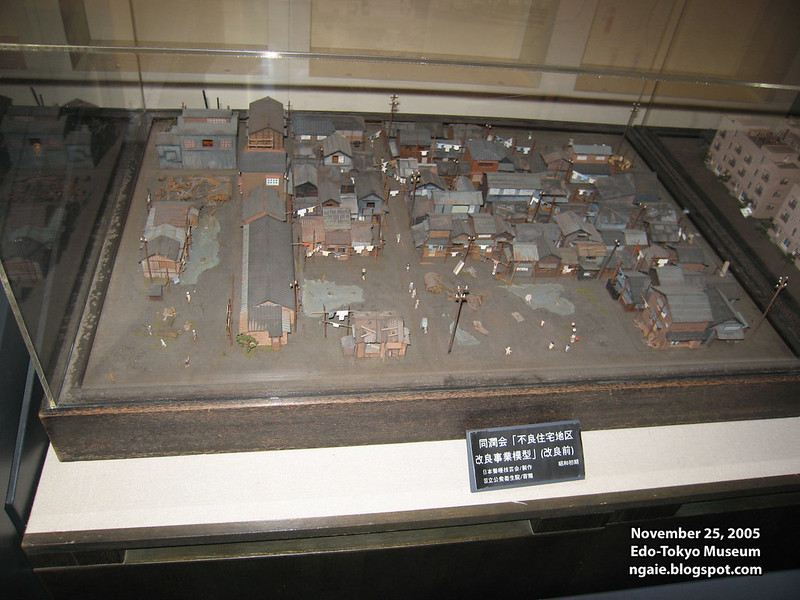
From the war period.

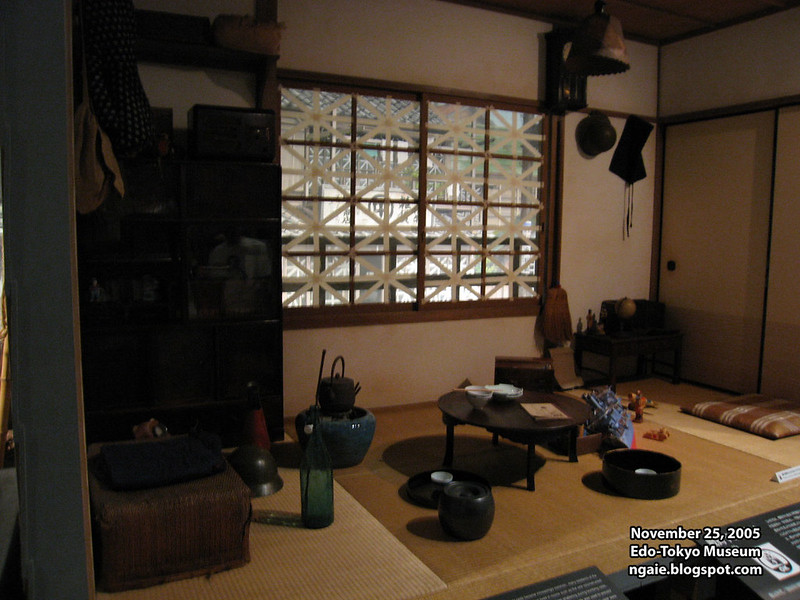

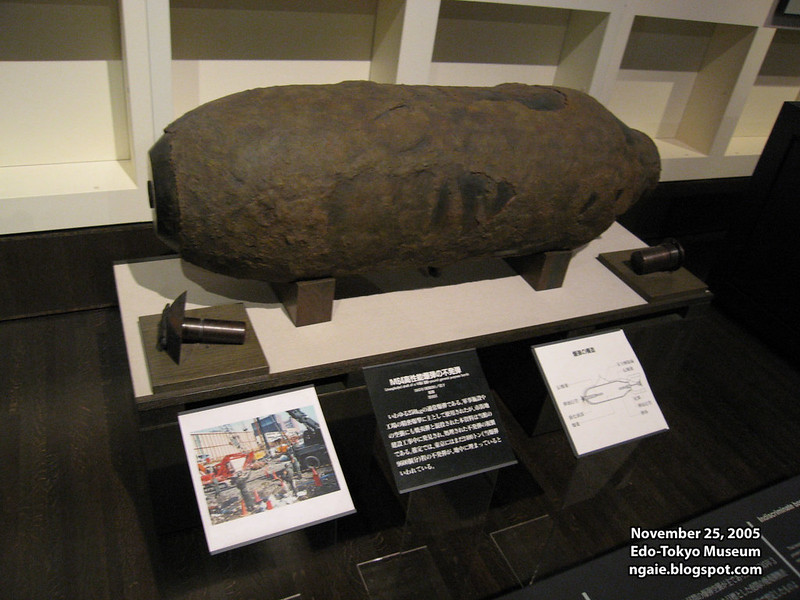
Copy of the instrument of surrender.



American candy from the American occupation period.
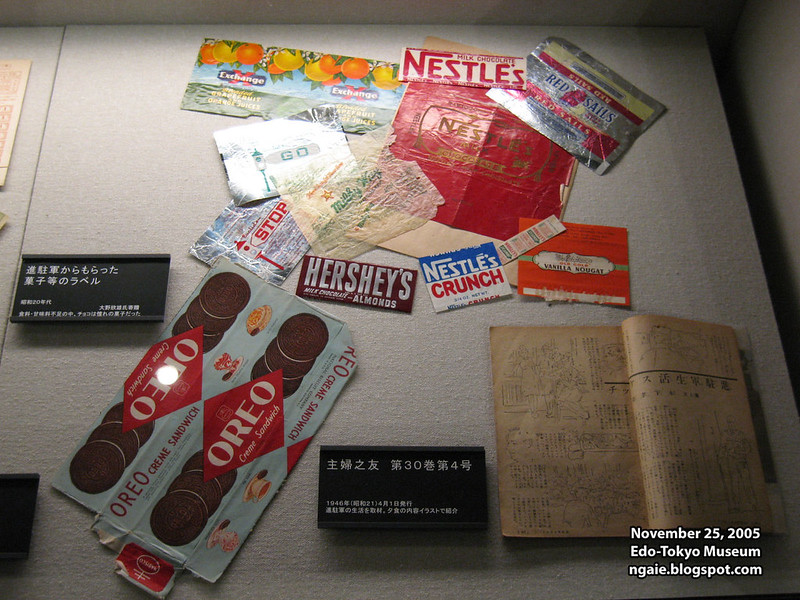
The 1964 Tokyo Olympics torch.

Memorabilia from the 1964 Tokyo Olympics.

The first Japanese mini-car by Subaru.
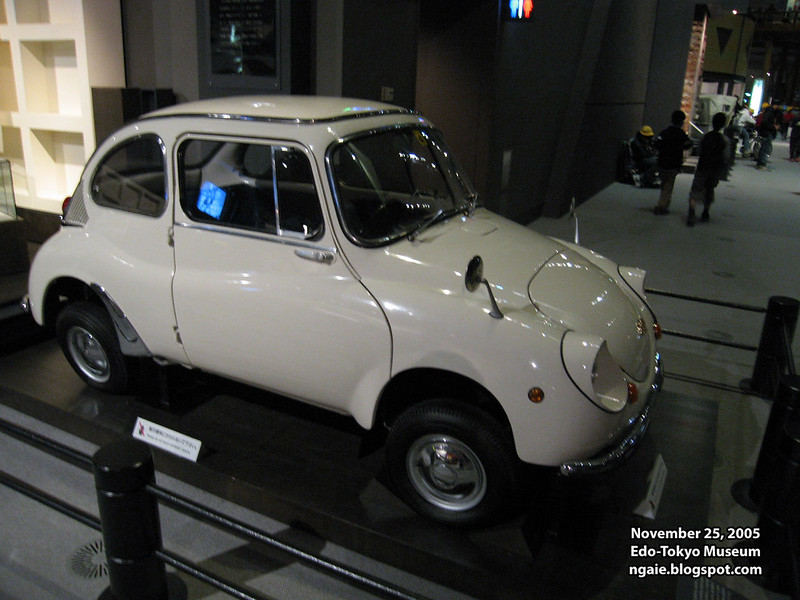

A rickshaw.


1 comments:
Wow, that's pretty crazy that Watanabe-san can speak so many languages!
And again with the deserted pictures. It's great you show pics of the stuff inside the museum, but show us some pics of you enjoying the trip!
Post a Comment